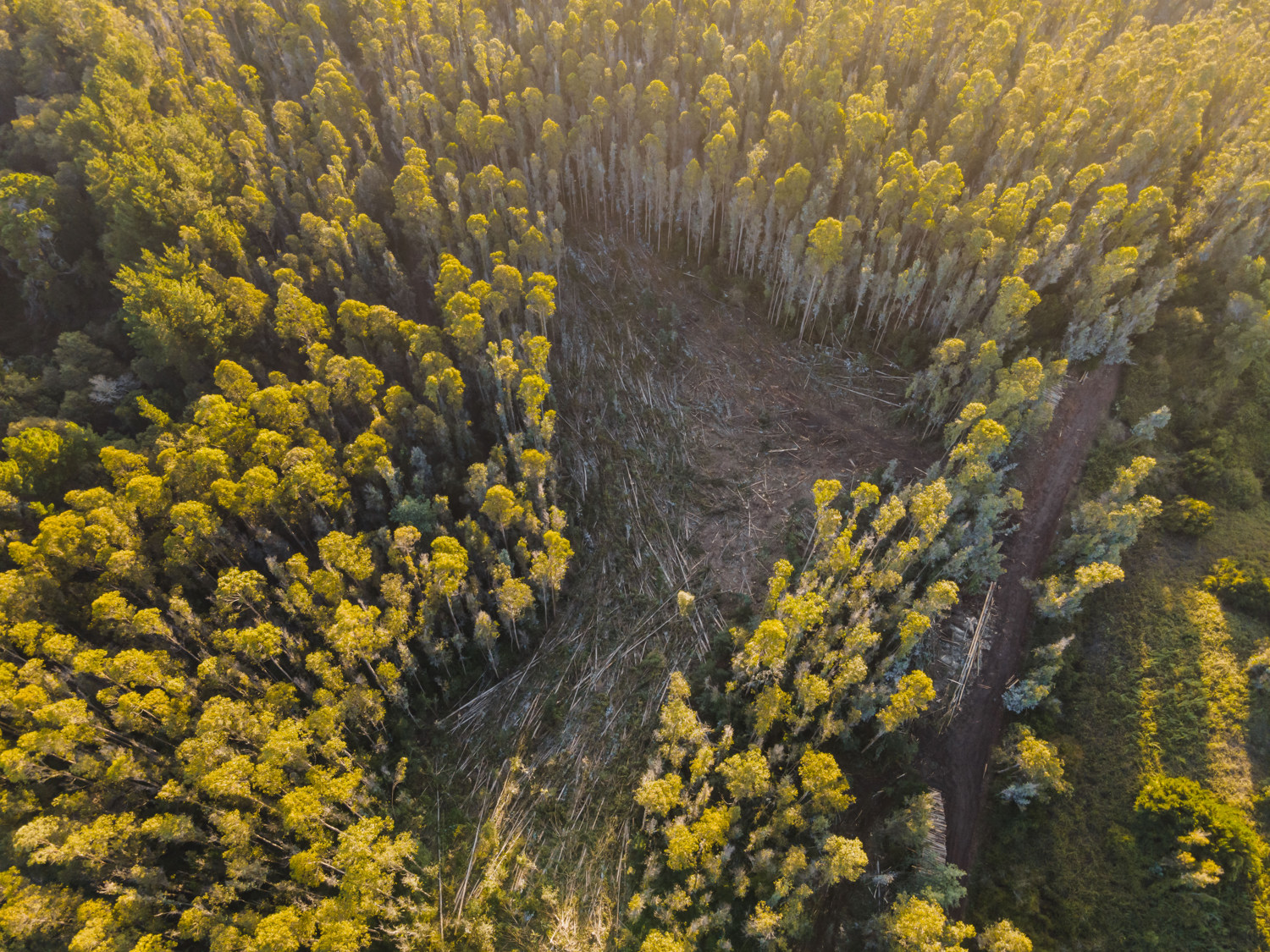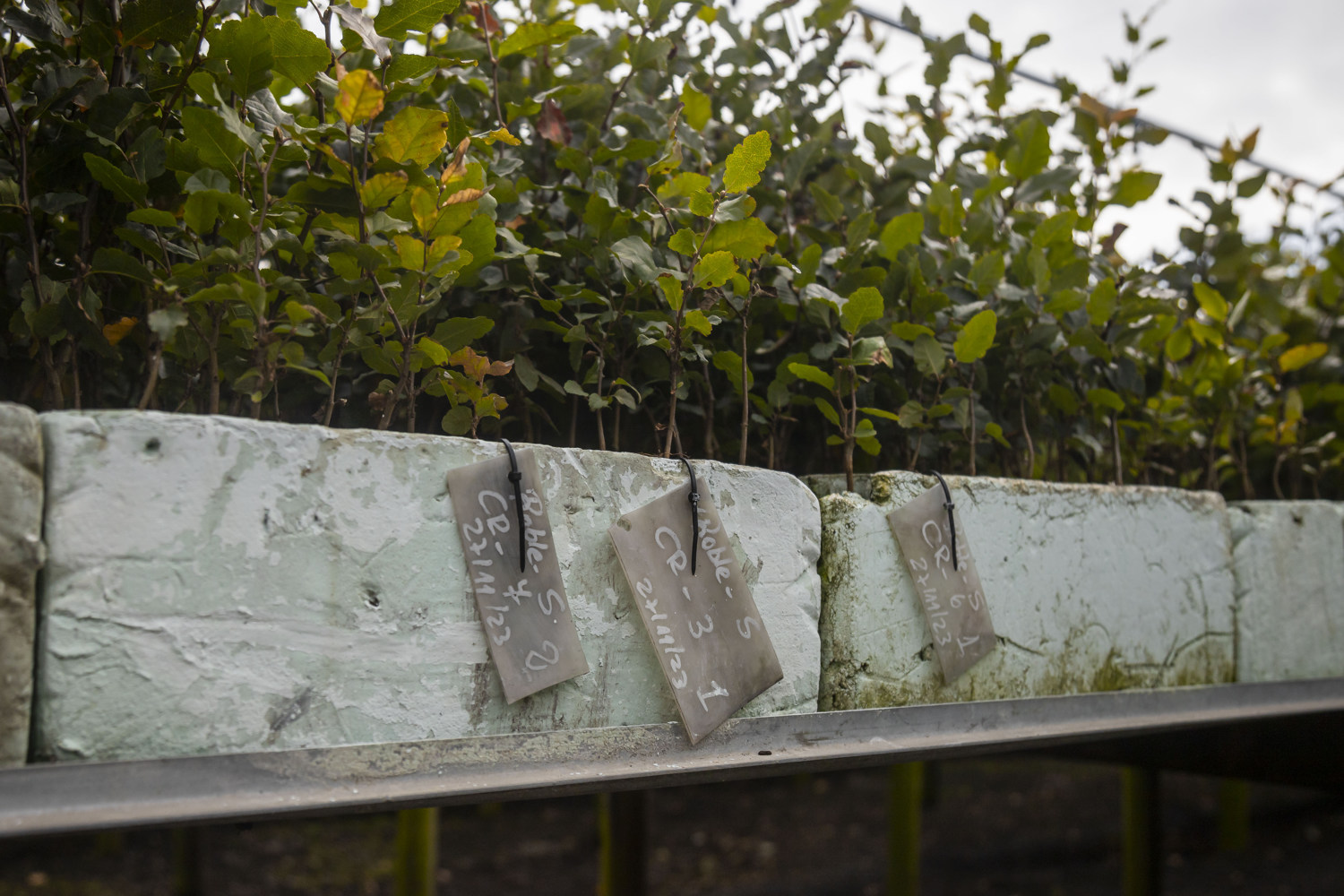Progress in Site Preparation for the Future Botanical Garden at UdeC

The timber harvesting of exotic tree species continues these days on the hills adjacent to the University of Concepción. The harvest will cover around 6 hectares and is a crucial action that will provide areas for the first botanical garden at UdeC as part of the ex-situ conservation line of the Campus Naturaleza project, a modality aimed at promote the conservation of species (flora, fauna, fungi) outside of its natural distribution.
Dr. Cristian Echeverría Leal, director of the Campus Naturaleza UdeC, comments, “This was done to maintain them (native species) after the harvest in order to help the establishment of native trees that will be part of the ex-situ collection of threatened Chilean Nothofagus. Various scientific studies, in some of which we have participated, agree that the climate crisis and human-induced alterations could seriously impact the survival of the three species of this genus in South America and endemic to Chile, which are Nothofagus alessandrii (ruil), endangered, N. glauca (hualo) and N. macrocarpa (Santiago oak), both of them vulnerable. These states of threat and vulnerability urge us to put our greatest efforts into conserving these species, in this case, outside their natural distribution between the Metropolitan and Maule regions,” explains the UdeC academic.
Prior to the start of harvesting activities, the presence and distribution of small groups of native trees and shrubs that still survive under the eucalyptus, the dominant species in the area, were identified. This was a voluntary measure established by the university, which complements the Management Plan approved by CONAF in March 2024.
The director of the Campus Naturaleza project at the University of Concepción, Dr. Cristian Echeverría Leal, comments “that this was done in order to maintain them (native species) after the harvest and that they can help establish the native trees that will be part of the ex – situ collection of threatened Chilean Nothofagus. Various scientific investigations, some of which we have participated in, agree that the climate crisis and the alterations produced by humans could seriously impact the survival of the three species of this genus in South America and endemic to Chile, which are Nothofagus alessandrii (ruil), in danger, N. glauca (hualo) and N. macrocarpa (Santiago oak), in a vulnerable state. These states of threat and vulnerability urge us to put our greatest efforts into the conservation of these species, in this case, outside their natural distribution which is between the Metropolitan and Maule regions," explains the UdeC academic.

Nothofagus are Growing
Although timber harvest is the first action of the ex-situ conservation of Campus Naturaleza project, the process started much earlier. Today, the Nothofagus that will arrive and populate the hectares starting in July of this year are growing in the Forest Institute (INFOR) nursery. For this, seeds were collected throughout the natural distribution of these species, a task that involved professionals of each institution that is leading the “Conservation and Restoration of Threatened Nothofagus Species in South America” project.
This initiative, funded by the Franklinia Foundation from Switzerland and led by the University of Concepción through the Landscape Ecology Laboratory, highlights the international scientific concern for the conservation of these iconic southern hemisphere tree species.
In this context, Manuel Acevedo Tapia, researcher at INFOR, one of the partner institution in the Nothofagus conservation project, explains that one of the central aspects is to avoid the crossing of related individuals (trees), that is, from the same site. This increases the chances of survival success for the plants.
“The production of plants is carried out considering the location where the seeds were collected. The idea is to consider the “mother plants” from the seed source to avoid inbreeding processes which occur when establishing individuals from the same mother in a common site. Therefore, the goal is to produce plants keeping a record, to later take them to Campus Naturaleza based on monitoring according to seed sources and places of origin.”
Site Preparation for Ex-situ Conservation
Timber harvesting activities are carefully carried out considering the native species existing in the area, comments Juan Emilio Espinoza, Head of Properties and Forest Management at the University of Concepción. “To date, there is approximately half a hectare of surface to be harvested, considering that the tasks will be performed in two stages, the second of which will begin when weather conditions improve. In this case, the native species we have are mainly boldo (Peumus boldus), litre (Lithraea caustica), and peumo (Cryptocarya alba), and therefore we are doing everything possible to protect them. No native species have been cut; the idea is to leave as many of them as possible and somehow support the process to be implemented in the sector.”
In addition to the harvesting tasks, he adds that the workers were trained, and it was established in the bidding terms that the maximum number of native species should be keep. “Now, there will always be some alteration because we are talking about felling trees that are between 20 to 30 meters tall, so it is very likely that some native vegetation will be damaged; however, we are trying to prevent that”.
The area where harvesting activities are been done is private property (owned by the University of Concepción). Nevertheless, it is well known to be used for recreation and sports by the local community. In this context, the University makes a special call not to transit through these areas and to take safety measures to avoid accidents.


